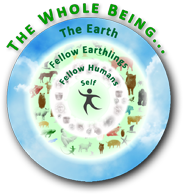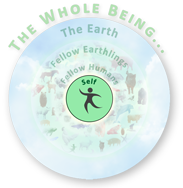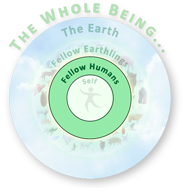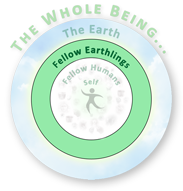Resource Library
To narrow down the list to only resources personally endorsed by CNCL, tick the “CNCL-Endorsed” box.
Please let us know if you find any errors or dead links.
Click here
for a list of…![]()
Broad-Coverage Independent News
& Media Sites
Video: “At the core of our being, lies the heart. The heart is what contains human emotion, including love and compassion. Though humanity wants world peace, we can’t seem to live peacefully amongst one another. Religious institutions, schools and educational systems, military and governments have done little to nothing to end the violence. Love is the solution, yet we continue to justify the violence. Why is this? The Lost Love examines why we lost our innate love for all life, and what we can do to reawaken it within us, and cultivate that to the rest of the world.” “Building upon the achievements of Stanford University’s Martin Luther King, Jr. Papers Project, the King Institute supports a broad range of activities illuminating Dr. King’s life and the movements he inspired.” Book: “Designed to produce dramatic health improvement in two months, a healthy eating program focuses on helping those who have already had, or are in danger of having a heart attack, but is also useful as a guide to the prevention of coronary disease.” Book: “In this eye-opening book, Sierra Club Director Ken Midkiff exposes the dangers posed by corporate control of agriculture (agribusiness)–to our health, and to the health of the nation’s economy, security, and the environment. The Meat You Eat explores the current practices of the corporations taking over the raising and slaughtering of farm animals (and farmed fish, such as salmon). These companies use a model that has transformed livestock farming from quality-driven family-owned operations into big businesses concerned with volume, efficiency, uniformity, and profits above all. Midkiff reveals the true cost of agribusiness on all levels-environmental, financial, moral, legal, and medical-balancing startling truths with practical solutions. Rather than advocate a vegan or vegetarian diet, Midkiff argues that using and supporting local farmers will improve the quality of life for us all, as well as for the animals whose meat we eat. Complete with resource sections about where to find local farmers and lists of agribusiness culprits, the book encourages us to take an active interest in what we put on our plates and in our mouths, and use the power of our pocketbooks to make it clear that our health, our environment, and our communities are of vital importance. With a foreword by Wendell Berry, hailed by The New York Times Books Review as the “great moral essayist of our day,” The Meat You Eat is an informative and ringing call to arms.” “When The Meatrix® launched in November 2003, the viral film broke new ground in online grassroots advocacy, creating a unique vehicle by which to educate, entertain and motivate people to create change. The Meatrix movies, now a series, have been translated into more than 30 languages and are one of the most successful online advocacy campaigns ever ― with well over 30 million viewers worldwide. In early 2003, Free Range Studios awarded a grant to GRACE’s Sustainable Table® program to create an animated movie. The studio was impressed that Sustainable Table not only educated viewers about factory farming but also offered simple solutions to support sustainable food and agriculture. They created The Meatrix, spoofing The Matrix movie while educating viewers about the problems with factory farming. To respond to the overwhelming positive feedback from the public, Sustainable Table and Free Range Studios launched the sequel The Meatrix® II: Revolting in March 2006, to explore the dark side of the industrial dairy industry. In November 2006, in partnership with Participant Productions, The Meatrix® II 1/2 was also released to help promote the social action campaign around the Fast Food Nation movie and to show what happens inside a meat processing facility…The Meatrix website offers information on the issues surrounding factory farming, as well as alternatives to conventionally-raised meat, poultry, dairy, and eggs. The website also features The Meatrix Interactive 360, a tool to help people learn about factory farming, with in depth information on the issues. The Eat Well Guide®, an online directory of sustainable food from farms, stores and restaurants in North America, was launched with the original movie to help people take action. “ Book: “Are you ready to get to the roots of your challenges around food– whether it’s gratuitous snacking,compulsive or emotional eating, indulging cravings, overeating, or other disheartening habits? Be ready to get mindful. Mindfulness can be the deciding factor between your successful adoption of a healthy vegan diet and repeated frustrating attempts. This simple technique goes under the surface of what is hampering your happiness, providing a sought-after solution to many of life’s ups and downs by rewiring your reactivity to challenges. Certified mindfulness meditation facilitator, award winning health educator, and longtime vegan advocate Lani Muelrath has been practicing mindfulness meditation for 25 years. In The Mindful Vegan, she teaches you how to practice mindfulness and shows how it can bring freedom and a new joy to your eating– and living– experience.” “Principled. Progressive. The Nation speaks truth to power to build a more just society. Home to tenacious muckraking, provocative commentary, and spirited debate about politics and culture, The Nation empowers readers to fight for justice and equality for all. By providing a deeper understanding of the world as it is—and as it could be—we drive bold ideas into the conversation and ignite debates far beyond our pages. We believe in intellectual freedom. We value facts and transparency. We argue that dissent is patriotic and we hold the powerful to account, no matter their political persuasion. We raise up the promise of a radical tomorrow while we agitate for meaningful change today. Above all, we aspire to galvanize a more informed public—one equipped with a more profound understanding of events, ideas, and history. Founded by abolitionists in 1865, we’ve long believed that independent journalism has the capacity to bring about a more democratic and equitable world. Our writers shift paradigms and open minds. Our deep investigative reporting launches congressional hearings, forces policy change, and shapes news cycles. Instigating progress: It’s not only our legacy, it’s our continued commitment to future generations of torchbearers.” “The Nature Conservancy is a global environmental nonprofit working to create a world where people and nature can thrive. Founded at its grassroots in the United States in 1951, The Nature Conservancy has grown to become one of the most effective and wide-reaching environmental organizations in the world. Thanks to more than a million members and the dedicated efforts of our diverse staff and more than 400 scientists, we impact conservation in 72 countries across six continents…Our mission is to conserve the land and waters on which all life depends. Our vision is a world where the diversity of life thrives, and people act to conserve nature for its own sake and its ability to fulfill our needs and enrich our lives.” “”The Nature Of Cities” follows the journey of Professor Timothy Beatley as he explores urban projects around the world, representing the new green movement that hopes to move our urban environments beyond sustainability to a regenerative way of living.” “The Network of Spiritual Progressives is a broad network that seeks to transform our materialist and corporate-dominated culture into a loving and just society. We envision a world based on a New Bottom Line of awe and wonder at the universe where everyone is seen as fundamentally valuable regardless of their role in the marketplace. We call this framework “a spiritual progressive worldview.” Our network includes environmentalists, social activists and people of all walks of life who identify as religious, spiritual, atheist, and secular humanist. We are the interfaith advocacy arm of Tikkun magazine.” Book: “How do you define the good life? For many, success is measured not by health and happiness but by financial wealth. But such a worldview overlooks the important things in life: personal contentment, family time, spirituality, and the health of the planet and those living on it. A preoccupation with money and possessions is not only unhealthy, it can also drain the true joy from life. In recent years, millions have watched their American Dreams go up in smoke. The international financial collapse, inflation, massive layoffs, and burgeoning consumer debt have left people in dire financial straits—including John Robbins, a crusader for planet-friendly food and lifestyle choices, who lost his entire savings in an investment scam. But Robbins soon realized that there was an upside to our collective financial downturn: Curtailed consumerism could lead us to reassess our lives and values. The New Good Life provides a philosophical and prescriptive path from conspicuous consumption to conscious consumption. Where the old view of success was measured by cash, stocks, and various luxuries, the new view will be guided by financial restraint and a new awareness of what truly matters. A passionate manifesto on finding meaning beyond money and status, this book delivers a sound blueprint for living well on less.” “Love Is Stronger Than Hate. “Nonviolence is not the recourse of the weak but actually calls for an uncommon kind of strength; it is not a refraining from something but the engaging of a positive force,” renowned peace activist Michael Nagler writes. Here he offers a step-by-step guide to creatively using nonviolence to confront any problem and to build change movements capable of restructuring the very bedrock of society. Nagler identifies some specific tactical mistakes made by unsuccessful nonviolent actions such as the Tiananmen Square demonstrations and the Occupy protests and includes stories of successful nonviolent resistance from around the world, including an example from Nazi Germany. And he shows that nonviolence is more than a tactic—it is a way of living that will enrich every area of our lives.” “A partnership of nonviolence training organizations and individuals offering educational programming for nonviolent transformation in our lives and our world” Resource directory: “A partnership of nonviolence training organizations and individuals offering educational programming for nonviolent transformation in our lives and our world” “A non-profit organization whose mission is to educate the general public by providing a forum that strives to highlight issues of relevance to human rights, national struggles, freedom and democracy in the form of daily news, commentary, features, book reviews, photos, art, and more.” Articles from The Nonviolent Activist Magazine » NVA July – August 2001 Book: “The Path of Most Resistance: A Step-by-Step Guide to Planning Nonviolent Campaigns is a practical guide for activists and organizers of all levels, who wish to grow their nonviolent resistance activities into a more strategic, fixed-term campaign. It guides readers through the campaign planning process, breaking it down into several steps and providing tools and exercises for each step. Upon finishing the book, readers will have what they need to guide their peers through the process of planning a campaign. This process, as laid out in the guide, is estimated to take about 12 hours from start to finish. The guide is divided into two parts. The first lays out and contextualizes campaign planning tools and their objectives. It also explains the logic behind these tools, and how they can be modified to better suit a particular group’s context. The second part provides easily reproducible and shareable lesson plans for using each of those tools, and explores how to embed the tools in the wider planning process.” “The mission of the Peace Abbey Foundation is to create and install public works of art that promote peace and nonviolence; and to administer and care for Abbey Interfaith Peace Chaplaincy, The Pacifist Memorial, The Animal Rights Memorial, Abbey Cremation Cemetery for Conscientious Objectors and the National Registry for Conscientious Objection. Throughout the year, the Foundation presents the Int’l Courage of Conscience Award at conferences and peace ceremonies and extends the impact of the Peace Seeds interfaith prayers for peace through their dissemination worldwide. We conduct and support programs that bring together and promote the cooperation of people of different faith traditions and non-theists as well. We do this in the spirit of the 1986 International Day of Prayer for World Peace, as celebrated that year by religious leaders from around the globe in Assisi, Italy. The Foundation supports grassroots efforts to link the many dimensions of the peace movement with a committed emphasis on human rights and animal rights. We recognize these two dimensions of intrinsic rights as inextricably interconnected, just as social and economic justice require environmental sustainability and deep respect for the biosphere. Central to our universalist approach is the premise that nonviolence is the most effective and long-term strategy in addressing the multitude of challenges that now threaten our increasingly imperiled planet.” “The Peace Alliance empowers civic action toward a Culture of Peace…One of the unique things that the Peace Alliance does is to focus not only on doing, and also being. We shift human understanding toward empathy, compassion and connection, thus fostering interdependence among citizens and dialogue toward common ground and peaceful solutions to conflict. This is the only approach that will work. Our Peace Alliance Council Leads establish what they feel are the clear and direct actions, through education, advocacy and collaboration, to expand and reinforce this shift to compassionate understanding and an expanded culture of peace.” “Vision: Peaceful local, national and global communities. Mission: To build peaceful relationships among people of all ages and cultures – from personal to global – through education , research and action. Values: In pursuing this mission we are committed to honour Te Tiriti O Waitangi, human rights and the peaceful resolution of conflict and to modelling peace-making values within the Foundation and beyond. “Found 1620 Results
The Lost Love (free full audiobook) by Michael Lanfield
![]()
The Martin Luther King, Jr. Research and Education Institute (Stanford University)
![]()
The McDougall Program for a Healthy Heart: A Life-Saving Approach to Preventing and Treating Heart Disease
The Meat You Eat: How Corporate Farming Has Endangered America’s Food Supply
The Meatrix
The Mindful Vegan: A 30-Day Plan for Finding Health, Balance, Peace, and Happiness
The Nation

The Nature Conservancy
![]()
The Nature of Cities (2010)

The Network of Spiritual Progressives

The New Good Life: Living Better Than Ever in an Age of Less
The Nonviolence Handbook: A Guide for Practical Action
The Nonviolence Training Hub

The Nonviolence Training Hub – Training Partners

The Palestine Chronicle
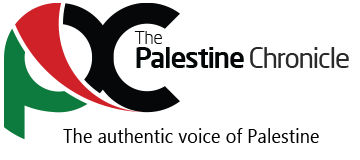
The Parameters of Nonviolent Action: What Makes an Action Nonviolent
![]()
The Path of Most Resistance: A Step-by-Step Guide to Planning Nonviolent Campaigns

The Peace Abbey
![]()
The Peace Alliance
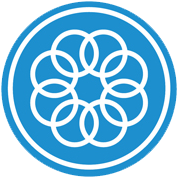
The Peace Foundation


